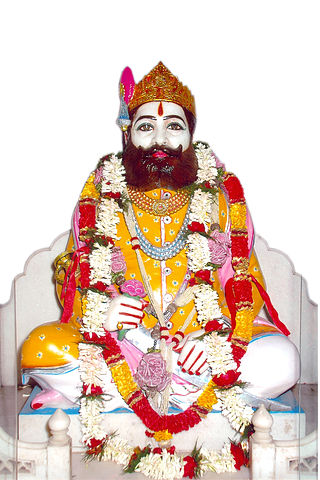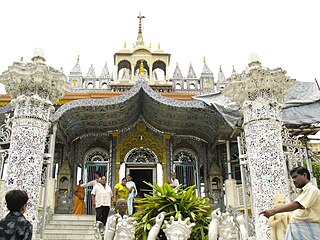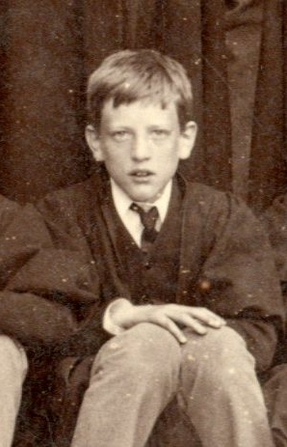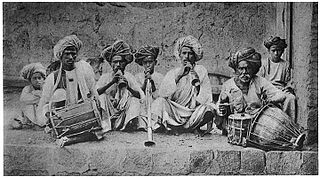Rajput, also called Thakur, is a large multi-component cluster of castes, kin bodies, and local groups, sharing social status and ideology of genealogical descent originating from the Indian subcontinent. The term Rajput covers various patrilineal clans historically associated with warriorhood: several clans claim Rajput status, although not all claims are universally accepted. According to modern scholars, almost all Rajput clans originated from peasant or pastoral communities.
Bisht is a surname found in the Indian state of Uttarakhand, Himachal Pradesh and country Nepal. The term "Bisht" originally referred to someone who held a land grant from the government. The Bisht families in Uttarakhand were chiefly Thokdars(Zamindars) of Thuljat origin. In Uttrakhand, Bishts are generally Kshatriya Rajputs. In Nepal, Bisht was adopted as a surname by Raute and Raji people. Bishta, as Bista, was also used as a surname used by Khas people, group under the caste Chhetri.

Khas tribe, popularly known as Khashya, according to the 2015 constitution of Nepal are an Indo-Aryan ethno-linguistic group native to the Himalayan region of the Indian subcontinent, in what is now the South Asian country of Nepal, as well as the Indian states of Uttarakhand, Himachal Pradesh, West Bengal, Assam and Sikkim. Historically, Khas were the speakers of an ancient Khas language from the Indo-Aryan language family and the earliest recorded speakers of the Western Pahari languages. The large portion of the Indo-Aryan speakers throughout lower Himalayas were the Khas people. An intrusion of this tribe from the Western and Northwestern Himalayas into Central Himalayas is substantiated by the early linguistic evidences related to the Nepali language. They were also known as Parbatiyas/Parbates and are currently known as Paharis/Pahadis.. They were also referred to as Yartse in Tibet and are also known as Khasan by Bhotia people. The term Khas has now become obsolete, as the Khas people have adopted communal identities because of the negative stereotypes associated with the term Khas. In Nepal the native speaker of Nepali language are known as Khas people.

Kurmi is traditionally a non-elite tiller caste in the lower Gangetic plain of India, especially southern regions of Awadh, eastern Uttar Pradesh and parts of Bihar. The Kurmis came to be known for their exceptional work ethic, superior tillage and manuring, and gender-neutral culture, bringing praise from Mughal and British administrators alike.
Parmar, also known as Panwar or Pawar, is a Rajput clan found in Northern and Central India, especially in Rajasthan, Gujarat, Punjab, Haryana, Uttarakhand, Uttar Pradesh, Bihar, Madhya Pradesh and North Maharashtra. The clan name is also used by Kōḷīs, Garoḍās, Līmaciyā Valands, Mōcīs, Tūrīs, Luhārs, Kansārās, Darajīs, Bhāvasārs, Cūnvāḷiyās, Ghañcīs, Harijans, Sōnīs, Sutārs, Dhobīs, Khavāsas, Rabārīs, Āhīrs, Sandhīs, Pīñjārās, Vāñjhās, Dhūḷadhōyās, Rāvaḷs, Vāgharīs, Bhīls, Āñjaṇās, Mer and Ḍhēḍhs.
A Bhilala is a tribe found in the Malwa and Nimar of the Central Provinces and in Central India. The total strength of the Bhilalas is about 150,000 persons, most of whom reside in the Bhopawar Agency, adjoining Nimar. Only 15,000 were returned from the Central Provinces in 1911. The Bhilalas are commonly considered, and the general belief may in their case be accepted as correct, to be a mixed caste sprung from the invading immigrant Rajputs with Bhils of the Central India hills. The original term was not improbably Bhilwala, and may have been applied to those Rajput chiefs, a numerous body, who conquered small estates in the Bhil country, or to those who took the daughters of Bhil chieftains to wife. The bhilalas in the central province are descendants of male Rajput with female Bhils and take the name of the Rajput clan to which they trace their origin. The Bhilalas are landholders and live like mukhis, Darbar or Thakur.
Halba are a tribal community found in Chhattisgarh, Maharashtra, Madhya Pradesh and Odisha in India. They speak the Halbi language. They are primarily agricultural community. Halbas are mixed tribes or tribal caste, descended from the unions of Gonds and Hindus. Linguistic evidence also points to the fact that the Halbas are an aboriginal tribe, who have adopted Hinduism and an Indo-European language. They were cultivators and farm servants whose home is the south of the Raipur District and the Kanker and Bastar States; from here small numbers of them have spread to Bhandara, parts of Berar and also into Koraput in Odisha.

Agrahari, Agraharee or Agarhari is an Indian Vaishya community, They are the descendants of legendary king Agrasena. Predominantly, they are found in the Indian state of Uttar Pradesh, Madhya Pradesh, Jharkhand, Chhattisgarh and Terai region of Nepal.

Shrimal (Srimal) Jain is an ancient Jain and Hindu community originally from Rajasthan, Shrimal or Bhinmal town in southern Rajasthan. They were traditionally wealthy merchants and money lenders and were prominent at the court of Rajput kings as treasurers and ministers, holding the titles of Dewan or Durbari. This caste is claimed to descend from the Goddess Lakshmi and their descendants are well known for business acumen and are in possession of Havelis and mansions given to them as gifts from kings for their service as royal treasurers, ministers, courtiers and advisors. The Shrimal (Srimal) Jain are thought to be the highest gotra in the Oswal merchant and minister caste that is found primarily in the north of India.
Nema is a merchant community which is mainly found in Madhya Pradesh. It has also spread to Gujarat and Rajasthan. It originated from the Nimar region of western Madhya Pradesh, where this community is still concentrated.
The Swarnkar is a Kshatriya caste in India. Swarnkar is a hindu suryavanshi and chandravanshi caste in India. The Sonar community works trader of gold or as goldsmiths. The community is primarily Hindu, and found all over India.
The Aheria are Indian caste found mainly in the states of Haryana, Rajasthan and Uttar Pradesh.
The Lonia or Nonia are Hindu other backward caste, found in Uttar Pradesh and Bihar adjoining areas, who were traditionally involved in salt-digging and salt-making activities. The Lonia or Nonia are listed as extremely backward caste along with Mallah, Bind and Beldar communities, by state governments. The community leaders have been seeking Scheduled Tribe status for the socially deprived community.

The Lodhi is a community of agriculturalists, found in India. There are many in Madhya Pradesh, to where they had emigrated from Uttar Pradesh. The Lodhi are categorised as an Other Backward Class, but claim Rajput ties and prefer to be known as "Lodhi-Rajput", although they have no account of their Rajput origin or prevailing Rajput traditions.
The Kandera, Kadera, Golandāz, Bāndar, Hawāidar is a Hindu community found mainly in the northern and central regions of India. They belong to the Kshatriya varna. In earlier times, they were archers and arrow-makers. Later, they also became involved in roles such as cannon operators, firework crafters, and the production of gunpowder and iron missiles. The term "Kandera" is derived from the Sanskrit word "Kandir", which means "an archer".

Chhipi is a caste of people with ancestral roots tracing back to India. These people are basically Rajputs and used to wear Kshatriya attire. These people were skilled in the art of war, Later people of this caste started doing printing work. They are found in the states of Gujarat, Rajasthan, Madhya Pradesh, Haryana, Delhi, Uttar Pradesh of India.

Robert Vane Russell was a British civil servant, known for his role as Superintendent of Ethnography for what was then the Central Provinces of British India, coordinating the production of publications detailing the peoples of the region. Russell served as Superintendent of Census Operations for the 1901 Census of India.

The Mang, or Matang, community is an Indian caste mainly residing in the state of Maharashtra. Matang are known as Madiga "kommati" in Telangana, Andhra Pradesh and Karnataka.
Chhokar, sometime spell as Chokar or Chokhar, is a clan of the Hindu and Muslim Gurjar people found in the south Asian regions of India, Afghanistan and Pakistan.
Rawat is a surname of people belonging to Hindu Rajput community. It is used as a surname, but during the medieval period it was a designation or title given to a soldier who performed exceptionally well in war. Types of Rawat are Chauhan Rawat, Pawar Rawat, Sisodiya Rawat, Dogra Rawat etc. from Uttarakhand and U.P divisions in the Indian state of Uttarakhand and Rajputs of Uttarakhand.







